Spatial Perception: How Paper Art Realizes the Expansion Design of Urban Spaces
Abstract
1. Introduction
2. Literature Review
3. Theoretical Basis: Material Art, Spatial Perception, and Design Models
3.1. Paper Art and Space
3.2. Spatial Perception
3.3. Design Model Analysis of Spatial Expansion
4. Model Interpretation: Spatial-Perception Representation of Paper Art
4.1. Interface-Based Spatial Perception
4.2. Scenario-Based Spatial Perception
4.3. Art-Based Spatial Perception
4.4. Culture-Based Spatial Perception
5. Methodology and Discussion: Research on the Application of Paper Art in the Design of Spatial Expansion
5.1. Course I: Realizing Interface Creation with Materials
5.1.1. Course Design
5.1.2. Design Methods
5.2. Course II: Creating Spatial Scenes with Themes
5.2.1. Workshop Experiments
5.2.2. Design Methods
5.3. Artist Interviews: Expressing Emotions Through Artistic Creation
5.3.1. Artist Interviews
5.3.2. Response and Discussion
As an ideal creative material rich in Chinese cultural attributes, paper is highly compatible with the Chinese qualities of kindness, tolerance and resilience. My installation “Paper Cloud Dragon” is made by breaking paper into pulp and shaping it into a sinuous and majestic oriental dragon with the help of an internal support structure. Suspended high in the space and combined with light and shadow effects, the work not only skillfully demonstrates the unique cultural characteristics of the paper material, but also profoundly interprets the spiritual core of the Chinese people’s perseverance and firm confidence in the future of the motherland. This creation is not only an innovative expression of the traditional material, but also an artistic presentation of the spirit of Chinese culture.
We hope to create not only for healthy people, but for all people, especially those who are marginalized by the public, such as the blind, the disabled and other special people. Caring for them is what makes art more attractive. By retaining the understanding of paper in the traditional sense of the public and using corrugated cardboard materials or using 3D printing materials for our creations, we are both passing down and paying homage to the paper-based culture, and tapping into the artistic sensibility of the blind community (Figure 9).
In the practice of spatial expansion design, paper material has become a highly promising and expansive material due to its green and environmentally friendly characteristics. Designers and artists actively explore the diversified application value of paper in contemporary life through the creation of paper art. At the same time, paper art also plays an important role in cultural and educational inheritance. Through the study of paper culture and the history of the development of modern industrial paper, we can further deepen the historical significance and contemporary innovation potential of paper materials.
As a unique design medium, paper is not only material in nature, but also an important link with warmth and emotional expression potential, and has shown its unique ability to increase capacity and convey emotion. We need to use other technical aids to realize the purpose of spatial landscape expansion design.
5.4. Questionnaire Discussion Study: Using Paper Art for Cultural Empowerment in Daily Life
5.4.1. Questionnaire Design
5.4.2. Case Discussion
- 1.
- Student Group: aesthetic practice-oriented
- 2.
- Ordinary Residents: sensory friendly
- 3.
- Design educators: implementers of win-win concepts
- 4.
- Urban white-collar workers: characteristics of stress compensation
- 5.
- Elderly group: focus on aging-friendly features
5.5. Results and Discussion
5.5.1. Research Results
5.5.2. Potential Limitations and Future Work
6. Conclusions
Author Contributions
Funding
Data Availability Statement
Conflicts of Interest
References
- Wang, S.; Zhang, L.; Zhao, L.; Shi, Y.; Wang, S. Research on innovative design of paper material for seating in urban public space. Pap. Inf. 2024, 1, 122–124. [Google Scholar]
- Yan, S. Research on immersive cross-scene collaborative innovation design in digital intelligence performance. J. Beijing Univ. Aeronaut. Astronaut. (Soc. Sci. Ed.) 2024, 37, 51–59. [Google Scholar]
- Gomez-Tone, H.C.; Martin-Gutierrez, J.; Bustamante-Escapa, J.; Bustamante-Escapa, P.; Valencia-Anci, B.K. Perceived Sensations in Architectural Spaces through Immersive Virtual Reality. Vitr. -Int. J. Archit. Technol. Sustain. 2021, 6, 71–81. [Google Scholar] [CrossRef]
- Liu, K.; Song, L. Culture Creates Public Value: Governance Structure, Behavior, and Performance in the Functional Transformation of Public Space. Urban Dev. Res. 2025, 31, 101–106. [Google Scholar]
- Sennett, R.; Rong, J. The Uses of Disorder: Personal Identity and Urban Life; Shanghai People’s Publishing House: Shanghai, China, 2023; p. 183. [Google Scholar]
- Chen, J. Exploring the path of urban organic renewal integrating stock and incremental space—Taking Yuhang Dream Town as an example. Small Town Constr. 2016, 3, 62–66. [Google Scholar]
- Wang, Y.; Zhou, Q. Discussion on the urban space and its creation strategy under the perspective of perceived experience of characteristic people. Int. Urban Plan. 2025, 40, 135–144. [Google Scholar]
- Guo, W.; Ma, X. New research on the origin of papermaking in ancient China. Xinhua Lit. Dig. 2023, 24, 67–69. [Google Scholar]
- Pan, J. The History of Papermaking in China; Shanghai People’s Publishing House: Shanghai, China, 2009; p. 597. [Google Scholar]
- Huang, T. A preliminary study on the exchange and dissemination of papermaking and Chinese and Western cultures. News Outpost 2020, 2, 89–90. [Google Scholar]
- Zhan, Y.; Wang, L.; Li, X. Introduction to Arts and Crafts; China Academy of Art Press: Hangzhou, China, 2019. [Google Scholar]
- Ma, W. The Use of Materials Is the Value Orientation of Expanding the Personalization of Books. Master’s Thesis, Harbin Normal University, Harbin, China, 2016. [Google Scholar]
- Jane, J.; Jin, H. The Death and Life of America’s Big Cities; Anjia: Singapore, 2012; p. 205. [Google Scholar]
- Glaeser, E. Triumph of the City: How Our Greatest Invention Makes Us Richer, Smarter, Greener, Healthier, and Happier; Penguin Books: New York, NY, USA, 2011; p. 352. [Google Scholar]
- Glaeser, E. Triumph of the City; Penguin Press: London, UK, 2011. [Google Scholar]
- Wu, Z. Smart City; Shanghai Science and Technology Press: Shanghai, China, 2020; p. 10186. [Google Scholar]
- Wu, Z.; Gan, W.; Liu, Z.; Li, S.; Zhou, M. AI city: Theory and modeling architecture. J. Urban Plan. 2022, 5, 17–23. [Google Scholar]
- Zeng, F. Research on Cross-cultural Communication Strategies of Intangible Cultural Heritage under the Perspective of Artificial Intelligence. Southeast Commun. 2024, 12, 23–26. [Google Scholar]
- Megha Purohit Atre, M. A New form of Art Through Paper Messy Arts. Tui Jin Ji Shu 2023, 44, 4162–4164. [Google Scholar] [CrossRef]
- Li, Z. On Hegel’s Theory of Perception. Foreign Philosophy. Master’s Thesis, Heilongjiang University, Harbin, China, 2009. [Google Scholar]
- Gibson, J. The Ecological Approach to Visual Perception; Psychology Press: London, UK, 2014; p. 332. [Google Scholar]
- Gregory, R. Eye and Brain; Princeton University Press: Princeton, NJ, USA, 1997; p. 296. [Google Scholar]
- Zhou, Q.; Wang, Y. Urban Design Thinking Based on Perception Dimension. Planner 2021, 37, 73–77. [Google Scholar]
- Ge, Z. A study on the correlation between image space and the space in which it is located--The Last Supper as an example. J. Archit. 2023, 3, 100–107. [Google Scholar]
- Husserl, E. Phenomenological Concepts; The Commercial Press: Beijing, China, 1986. [Google Scholar]
- Huang, Y. Quantitative Research on Contextual Space Based on Visual Perception. Master’s Thesis, Central South University, Changsha, China, 2022. [Google Scholar]
- Xu, C. Research on the Importance of Public Sculpture to Campus Culture Construction. Beauty Times (City Ed.) 2018, 5, 63–64. [Google Scholar]
- Zhang, P.; Zhang, N. Public perception and reconstruction path of urban narrative environment. Jiangxi Soc. Sci. 2016, 36, 240–245. [Google Scholar]
- Sun, Z. Work-existence-space Heidegger and architectural phenomenology. Times Archit. 2008, 6, 10–13. [Google Scholar]
- Nikolic, P.; Yang, H. Designing Playful Cities: Audio-Visual Metaphors for New Urban Environment Experience. Mob. Netw. Appl. 2020, 25, 846–852. [Google Scholar] [CrossRef]
- Tan, J. Touching the World with Your Eyes: Exploring the Teaching of Handmade Paper and Decorative Paper Art. Decoration 2013, 12, 86–87. [Google Scholar]
- Huang, L. The use of paper art design in interior design--Review of Creative Design of Paper Products. China Pap. 2019, 38, 95. [Google Scholar]
- Xue, H.; Guo, X.; Otgeng, N. The Application Of Traditional Paper Art Skills In Modern Lighting Design. Mater. Process. Manuf. III PTS 1-4 2013, 753–755, 1607–1615. [Google Scholar] [CrossRef]
- Braun, V.; Clarke, V. Using thematic analysis in psychology. Qual. Res. Psychol. 2006, 3, 77–101. [Google Scholar] [CrossRef]
- Zheng, C. Design strategies for immersive art healing. New Art 2021, 42, 257–263. [Google Scholar]
- Zhou, Y.; Li, J. Research on the design of healing spatial environment for dementia elderly care institutions. J. Archit. 2018, 2, 67–73. [Google Scholar]
- Surge. 2022 ‘Most Beautiful Books’ Unveiled, 25 Books Awarded [EB/OL]. 29 April 2023. Available online: https://www.thepaper.cn/newsDetail_forward_20642865 (accessed on 5 February 2025).
- Zhang, Y. Research on book binding design based on the concept of slow design. Publ. Wide 2018, 11, 77–79. [Google Scholar]
- Li, Y. Demystifying the future of the paper industry—Europe is researching eight breakthrough technologies. China Pap. 2016, 2, 6–10. [Google Scholar]
- Babcock, M. Ecology and Paper. Hand Papermak. 2023, 38, 33–37. [Google Scholar]
- Huo, D. Research on the Interactivity of Installation Art in Contemporary Urban Space. Beauty Times (City Ed.) 2018, 1, 80–81. [Google Scholar]
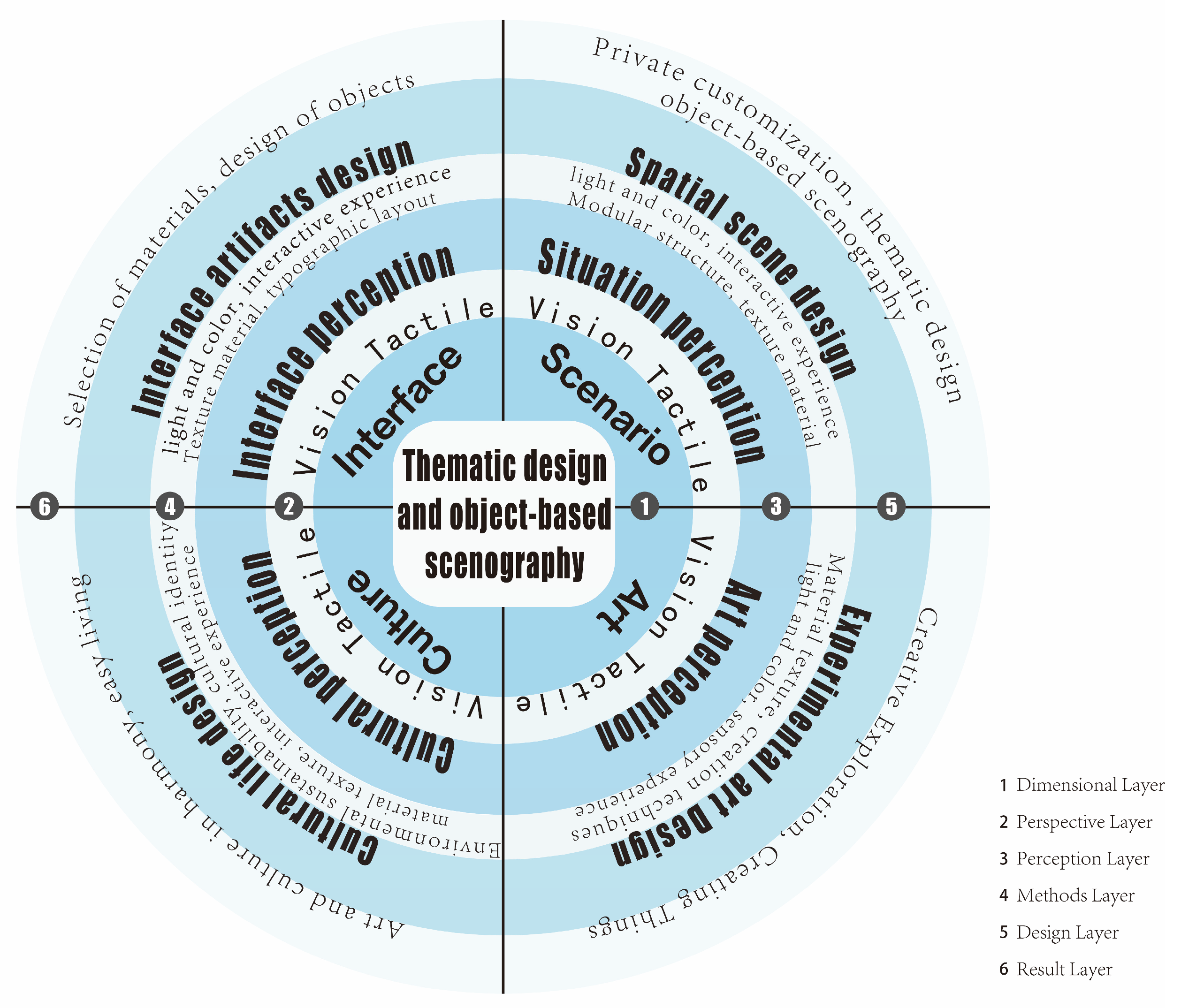
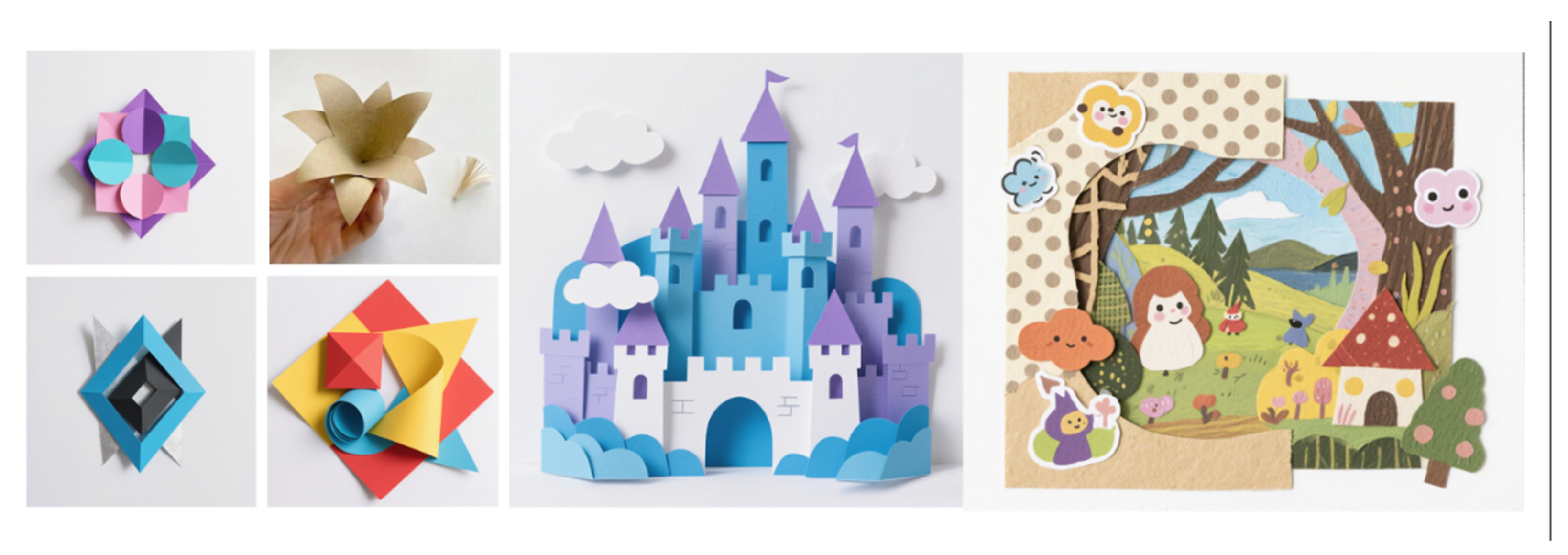


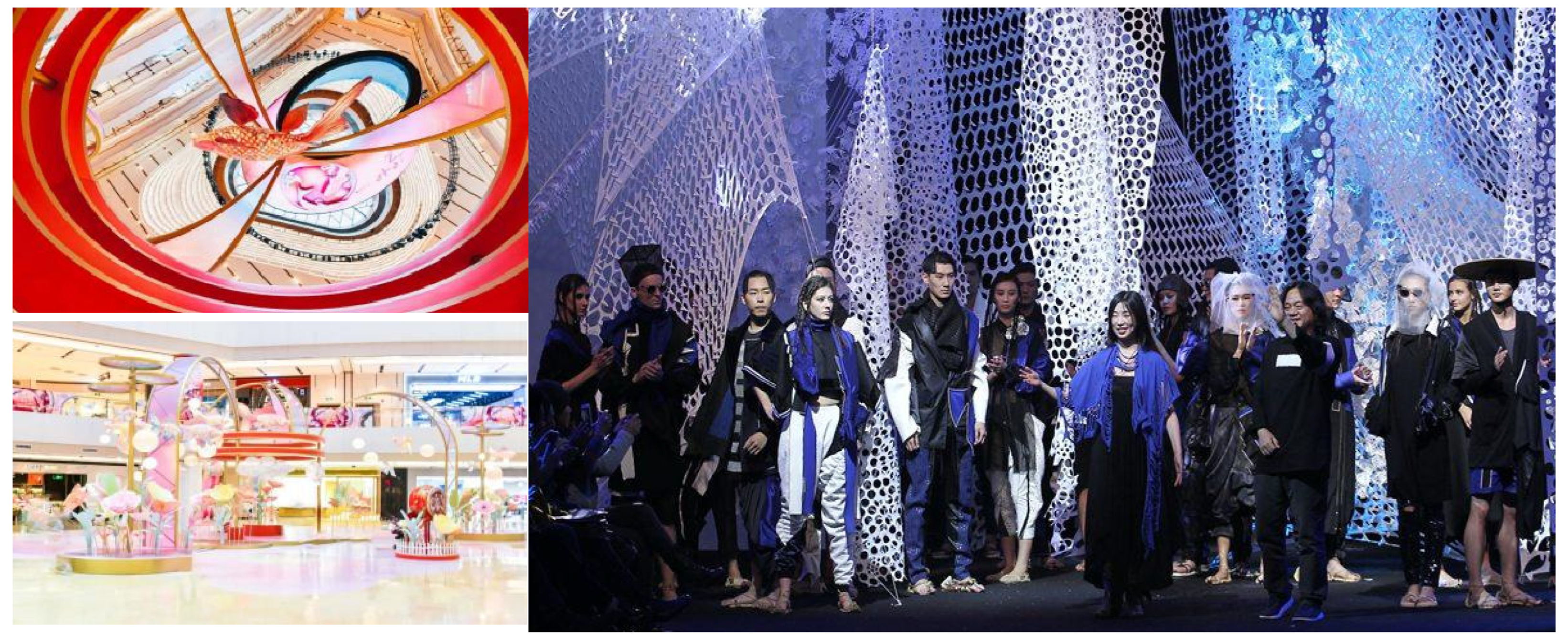

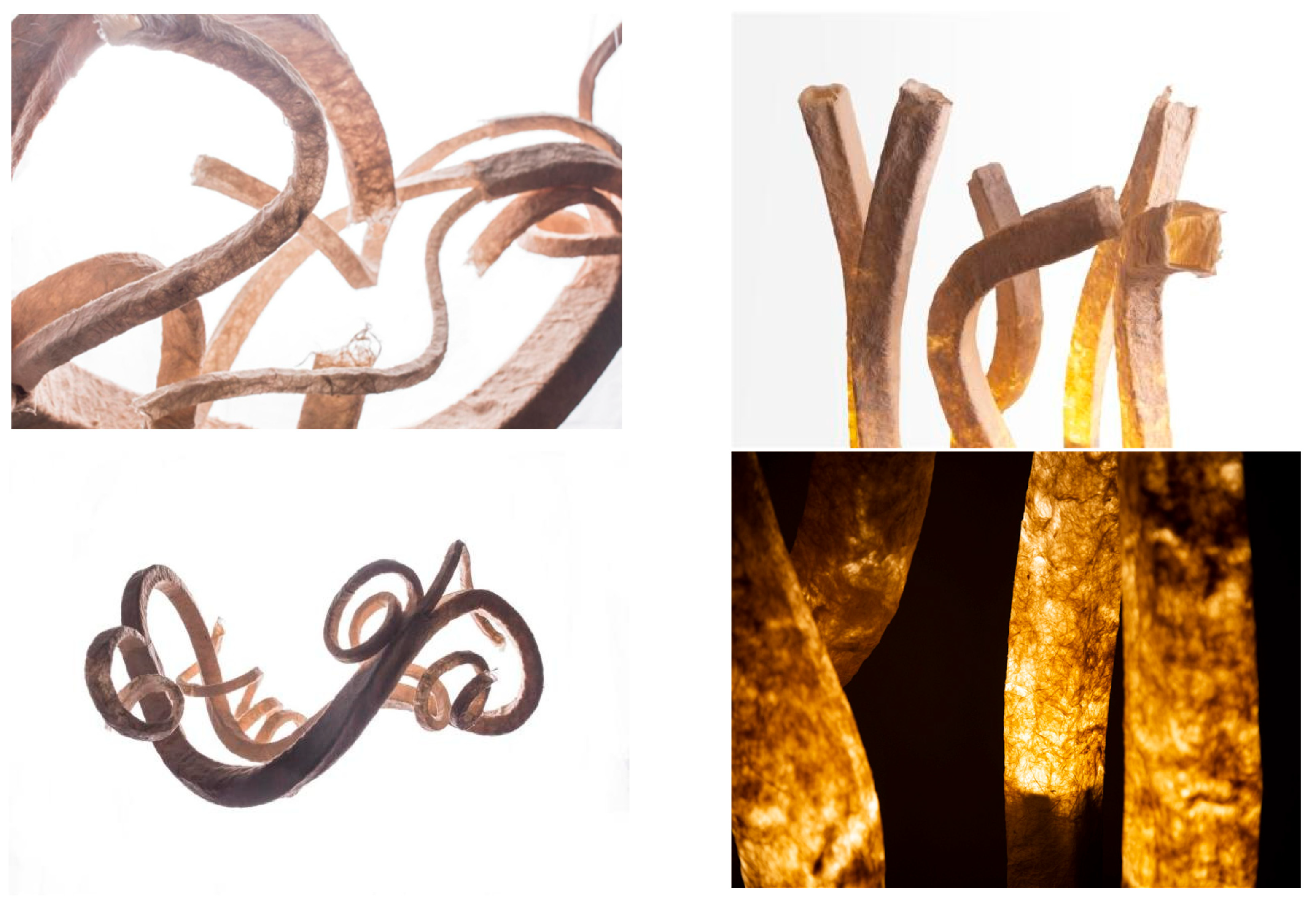

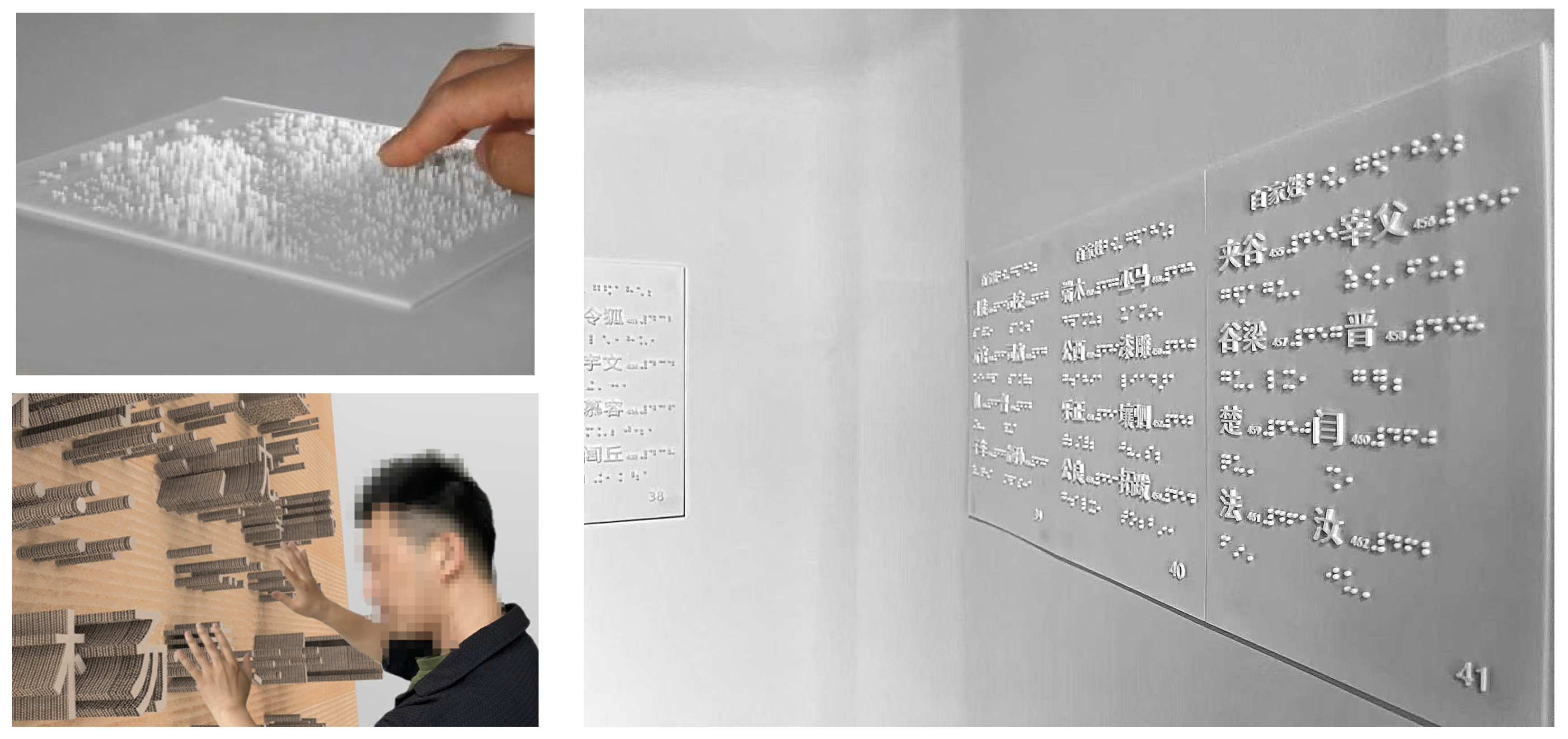
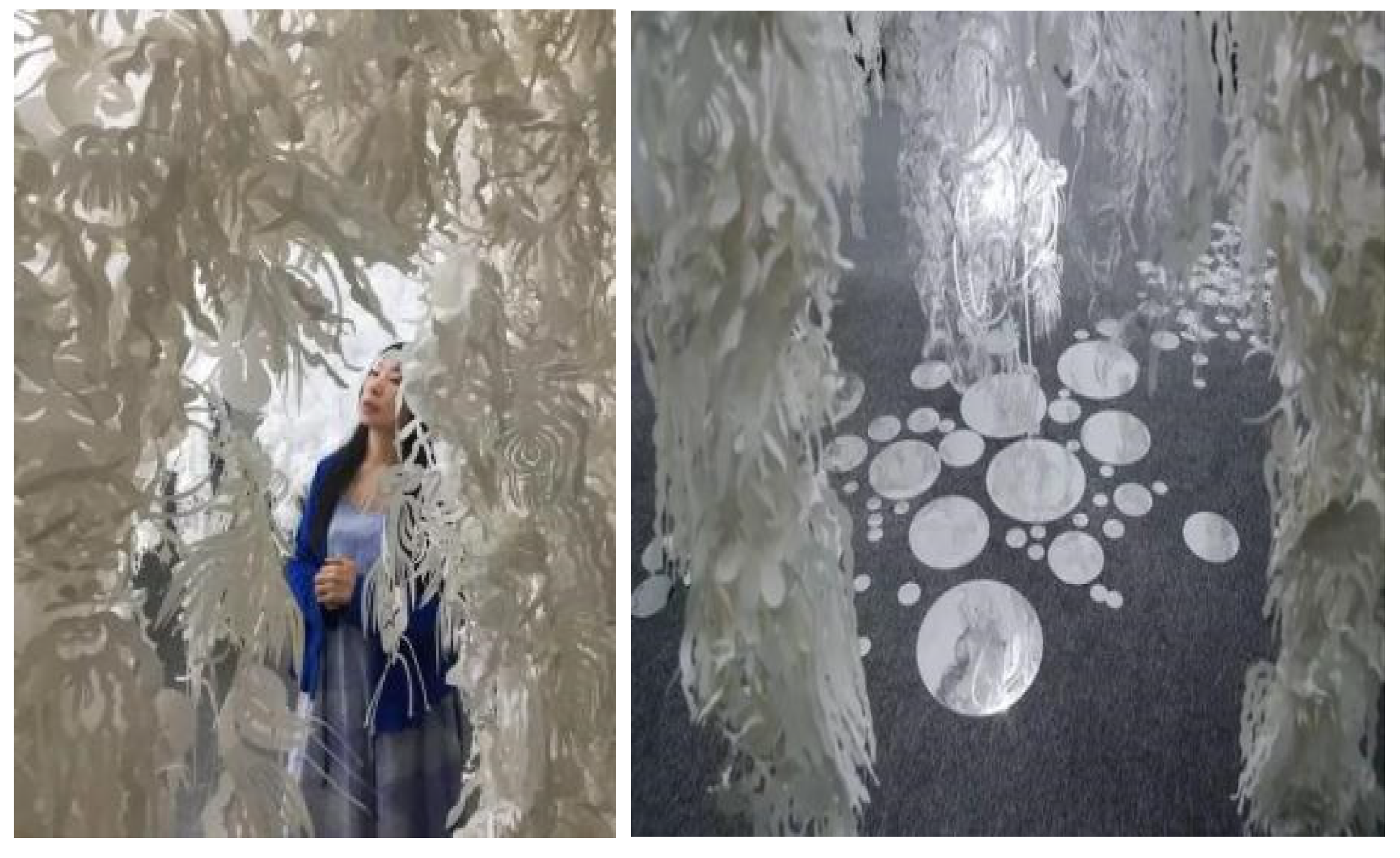
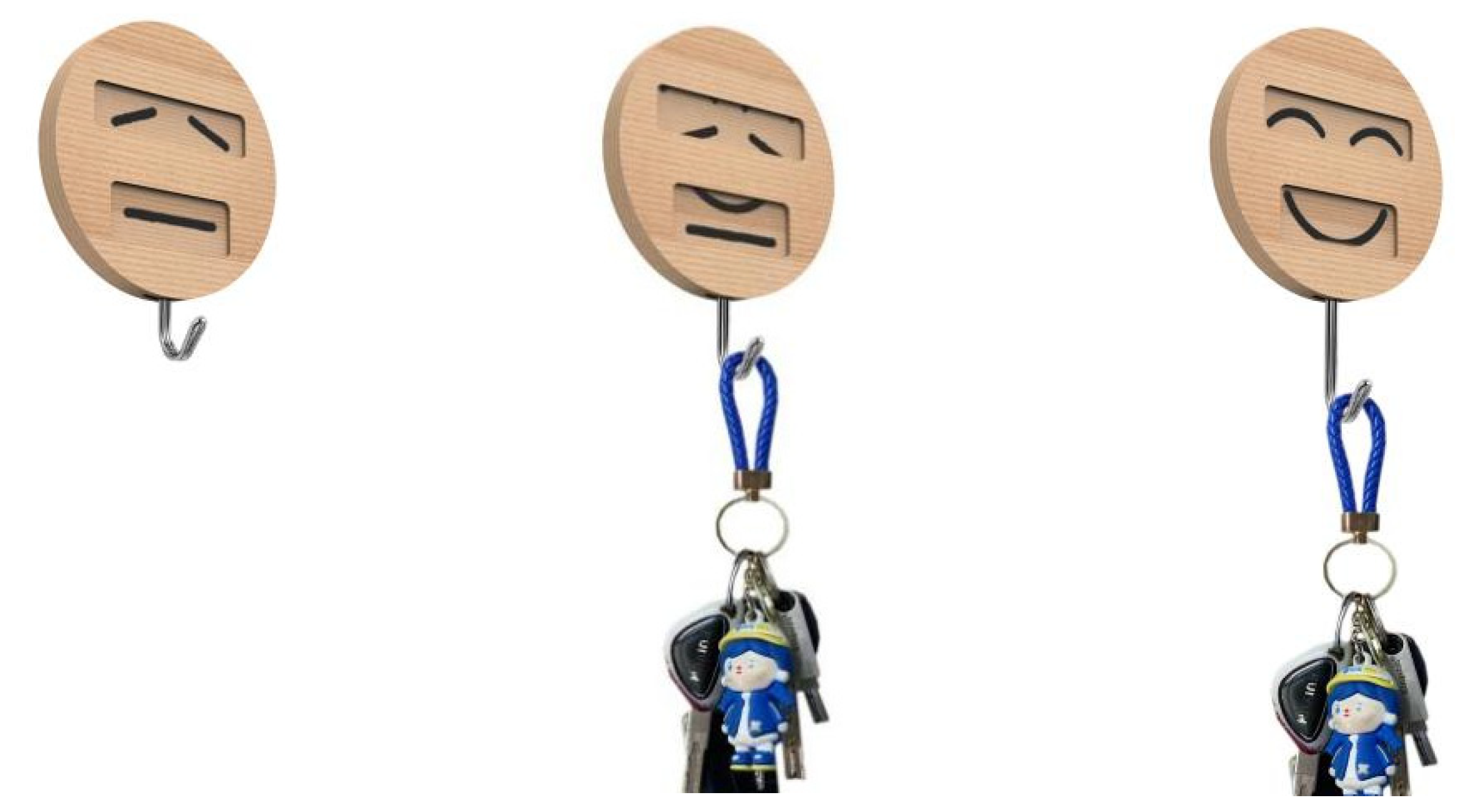
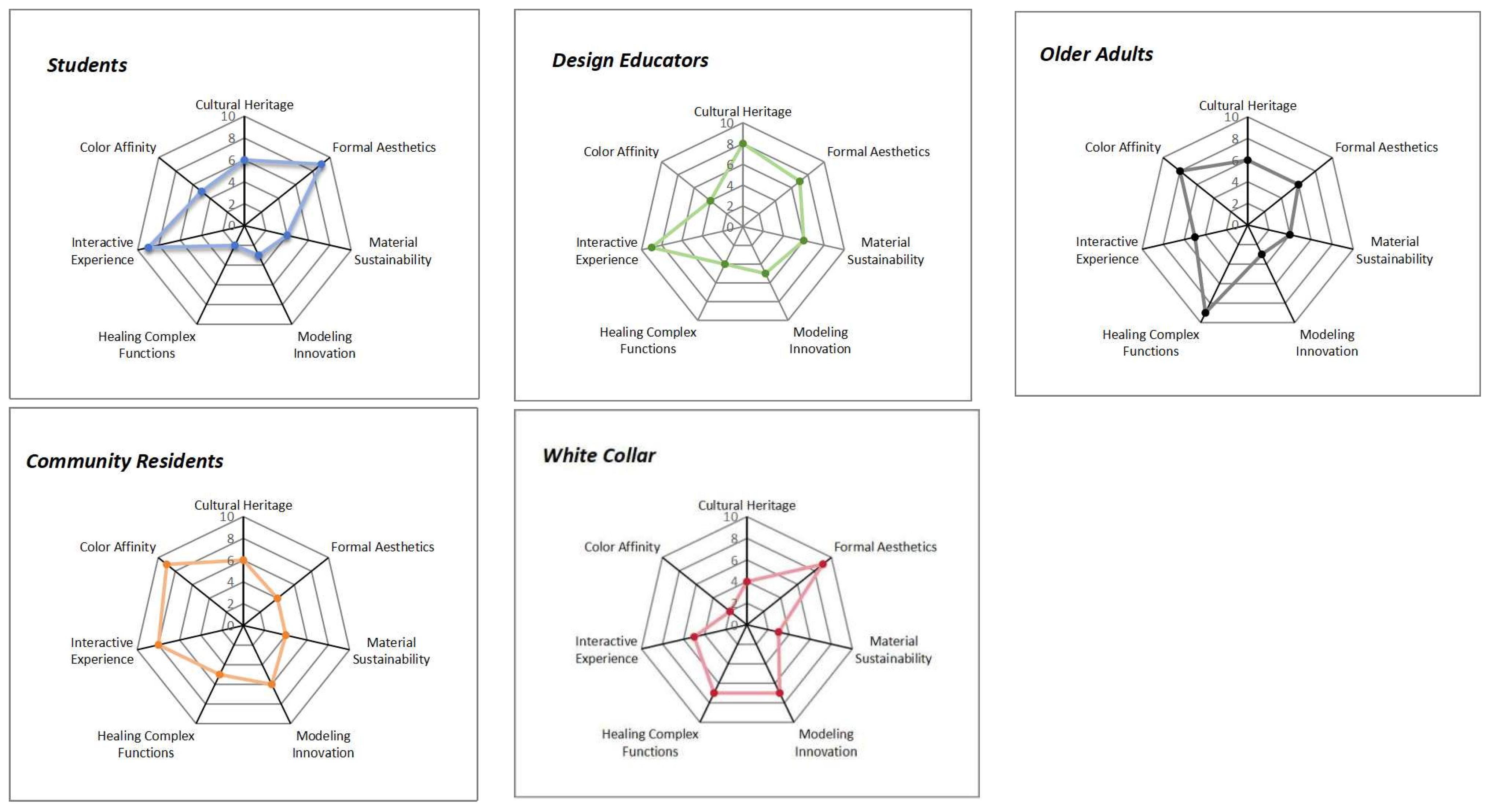
| Planar Visual Expansion: Point Line Surface | Three-Dimensional Tactile Expansion: Relief | Interface Landscape Expansion: Multi-Dimensional | |
|---|---|---|---|
| Group A (10 students) | Number: 2 students. Method: flat drawing, collage, considering the color, typography, and layout of the paper. | Number: 3 students. Methods: collage, superimposed reorganization, relief modeling, stretching and distortion, and light and shadow illumination. | Number: 5 students. Method: flat painting and relief modeling combinations and use of light angles and brightness. |
| Group B (10 students) | Number: 1 student. Method: graphic composition design, collage, paper materials, color, and plan layout. | Number: 4 students. Methods: relief modeling, structural reorganization, collage method, superimposed combination, stretching and deformation, and light and shadow illumination. | Number: 5 students. Method: flat painting and relief modeling combination, using the angle and brightness of light to create a scene. |
| Group C (10 students) | Number: 3 students. Methods: graphic composition design, collage, paper materials, color, and plan layout. | Number: 4 students. Methods: collage method, deconstructive superimposition, relief modeling, stretching and distortion, and light and shadow illumination. | Number: 3 students. Method: plane painting and relief modeling combination of aquascape approach. |
| Deconstruction and Reorganization Expansion | Theme Lighting Expansion | Composite Material Expansion | |
|---|---|---|---|
| Group A (15 students) | Number: 3 students. Methods: graphic composition design, collage, paper materials, color, plan layout, model component combination, and modular structure design. | Number: 5 students. Methods: collage, deconstruction and superposition, relief modeling, stretching and deformation, and other techniques, combined with the use of light and shadow lighting and material texture and color morphology, with light, to achieve the design of spatial expansion. | Number: 7 students. Methods: graphic painting and relief modeling, using composite materials, and with metal, wood, and other materials, to realize the design of spatial expansion of the theme aquascape. |
| Group B (15 students) | Number: 5 students. Methods: plane composition, collage, paper materials, color, plan layout, model component assembly, and modular structural design. | Number: 4 students. Methods: collage, deconstruction and superposition, relief modeling, stretching and deformation, and other techniques, combined with the use of light and shadow lighting and material texture and color morphology, with light, to achieve the design of spatial expansion. | Number: 6 students. Methods: graphic painting and relief modeling, using composite materials, and with metal, wood, and other materials, to realize the design of spatial expansion of the theme aquascape. |
| Material Innovation/Expansion Design | Emotional Expression/Expansion Design | Innovative Experiment/Expansion Design | Spatial Landscape/Expansion Design | |
|---|---|---|---|---|
| Interview question design | What are the most important characteristics of paper materials? What are the most important characteristics of paper? What are the unique physical or cultural qualities of paper compared to other medias for emotional expression? How does paper become a “carrier” for your emotions? | How does paper art help you convey your personal emotions or cultural connotations? Are there any of your works that have succeeded in provoking an emotional response from the viewer? | When exploring the possibilities of paper art, how do you break through the formal limitations of traditional paper art? Have you encountered any technical or material challenges during your experiments? How did you overcome these difficulties? | Paper art is often regarded as “fragile” or “temporary”, so how do you use structural design or spatial layout to create a “sense of visual expansion” or “sense of emotional immersion” in a particular scene? How do you make paper “visually expansive” or “emotionally immersive” in a particular scene through structural design or spatial layout? How do you see the role of paper art in the design of spatial expansion? |
| User Information | Students | Community Residents | Design Educators | Urban White-Collar Workers | Elderly Group |
|---|---|---|---|---|---|
| Age range | 12–25 | 25–60 | 30–50 | 25–50 | Over 60 |
| Demand Portrait | To learn paper-art design skills and improve practical ability and creative thinking. Wish to design solutions that are artistic, interesting, interactive, and integrated into real-life scenarios. | Decorate home space or community public areas with paper art to create a warm and harmonious atmosphere and enhance neighborhood interaction. Convenient, safe, and sustainable. | Sustainable and safe teaching cases and design inspirations optimize the spatial expression and innovative design potential of paper art. Combines pedagogical value and artistic creativity. | Optimize the office or living space through paper art to relieve stress and improve the quality of life. We hope that the works are both artistic and practical and can effectively enhance the atmosphere of the space. | Decorate your home space or participate in community cultural activities through paper art to experience the charm of traditional and modern art. The works are simple, safe, environmentally friendly, beautiful, and sustainable and at the same time can evoke emotional memories. |
| Life Scene | Campus studios, dormitories, and exhibition halls. | Community public area and family living room. | Classrooms, design laboratories, and exhibition halls. | Home study and office. | Family living room and community activity center. |
| Preferred Style | Beautiful form, unique shape, dynamic light and shadow effects, and technological interactive devices. | Cultural elements, natural colors, minimalist style, and green environmental protection. | Cross-border design, sustainable design, and works that combine cultural heritage and modernity. | Beautiful shape, color unity, minimalism, and artistic quality. | Environmentally friendly use, nostalgic style, traditional cultural elements, and soft colors. |
| Students | Cultural Heritage | Formal Aesthetics | Material Sustainability | Modeling Innovation | Healing Complex Functions | Interactive Experience | Color Affinity |
|---|---|---|---|---|---|---|---|
| 1 | 5 | 9 | 3 | 2 | 2 | 9 | 7 |
| 2 | 7 | 10 | 6 | 1 | 0 | 8 | 4 |
| ... | ... | ... | ... | ... | ... | ... | ... |
| 50 | 3 | 10 | 5 | 4 | 1 | 10 | 5 |
| Students | Community Residents | Design Educators | White Collar | Older Adults | |
|---|---|---|---|---|---|
| Cultural Heritage | 6 | 6 | 8 | 4 | 6 |
| Formal Aesthetics | 9 | 4 | 7 | 9 | 6 |
| Material Sustainability | 4 | 4 | 6 | 3 | 4 |
| Modeling Innovation | 3 | 6 | 5 | 7 | 3 |
| Healing Complex Functions | 2 | 5 | 4 | 7 | 9 |
| Interactive Experience | 9 | 8 | 9 | 5 | 5 |
| Color Affinity | 5 | 9 | 4 | 2 | 8 |
Disclaimer/Publisher’s Note: The statements, opinions and data contained in all publications are solely those of the individual author(s) and contributor(s) and not of MDPI and/or the editor(s). MDPI and/or the editor(s) disclaim responsibility for any injury to people or property resulting from any ideas, methods, instructions or products referred to in the content. |
© 2025 by the authors. Licensee MDPI, Basel, Switzerland. This article is an open access article distributed under the terms and conditions of the Creative Commons Attribution (CC BY) license (https://creativecommons.org/licenses/by/4.0/).
Share and Cite
Zhang, D.; Zhang, X.; Zhou, H. Spatial Perception: How Paper Art Realizes the Expansion Design of Urban Spaces. Buildings 2025, 15, 1967. https://doi.org/10.3390/buildings15121967
Zhang D, Zhang X, Zhou H. Spatial Perception: How Paper Art Realizes the Expansion Design of Urban Spaces. Buildings. 2025; 15(12):1967. https://doi.org/10.3390/buildings15121967
Chicago/Turabian StyleZhang, Dingwei, Xiaotong Zhang, and Hongtao Zhou. 2025. "Spatial Perception: How Paper Art Realizes the Expansion Design of Urban Spaces" Buildings 15, no. 12: 1967. https://doi.org/10.3390/buildings15121967
APA StyleZhang, D., Zhang, X., & Zhou, H. (2025). Spatial Perception: How Paper Art Realizes the Expansion Design of Urban Spaces. Buildings, 15(12), 1967. https://doi.org/10.3390/buildings15121967





